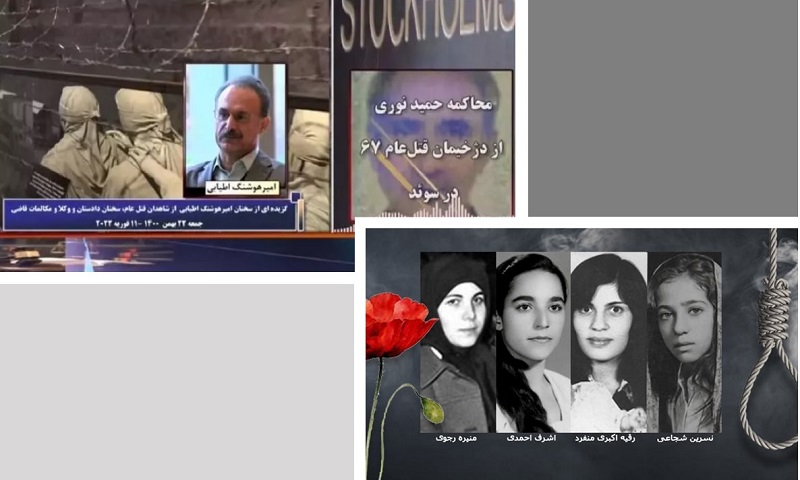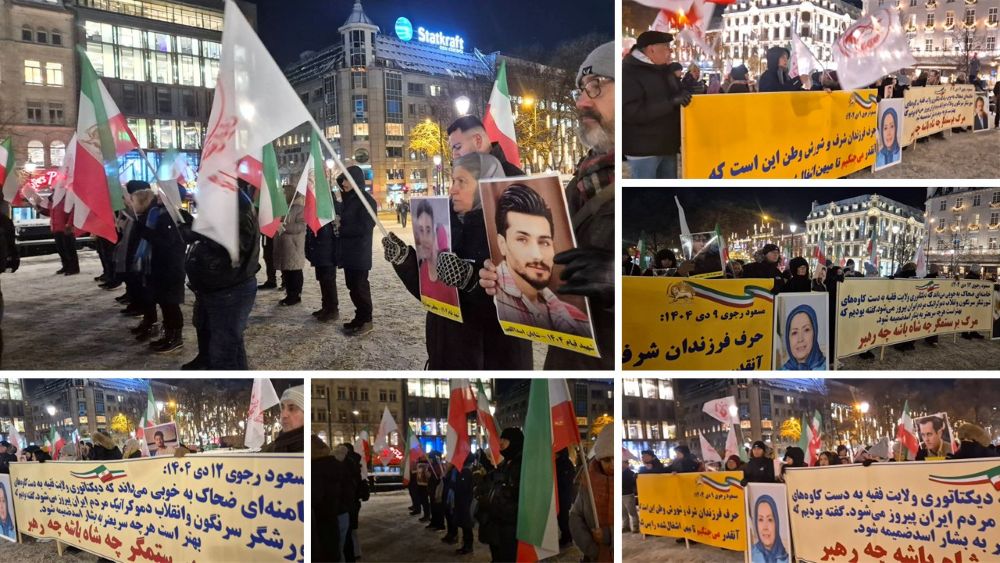
The 66th session of the trial of former Iranian prison official Hamid Noury took place in Stockholm, Sweden on Friday, February 11. During the session, former political prisoner Amir Houshang Atyabi took to the stand to give his testimony for the second time, after previously testifying during the 61st session on January 24.
Noury was arrested in 2019 in Sweden, during a trip to the Scandinavian country, for his involvement in the 1988 massacre in Iran. The massacre saw the brutal executions of over 30,000 political prisoners, the majority of whom were members or supporters of the Iranian opposition group, the People’s Mojahedin Organization of Iran (PMOI/MEK). At the time, Noury was working as the deputy prosecutor of Gohardasht Prison in Karaj, where many of the executions took place.
The National Council of Resistance of Iran (NCRI) said, “Atyabi, a supporter of the Tudeh (Communist) Party of Iran, was arrested in 1983 once the regime banned the group from political activities. He had previously testified during Noury’s 61st session on January 24. He gave harrowing accounts of large trucks taking bodies of executed prisoners out for days.”
During the latest session on February 11, Atyabi was questioned by the defendant’s lawyer about how many trucks he witnessed coming to the prison. The lawyer stated, “You told us that the truck came once or twice a week,” while Atyabi clarified, “No, they came once or twice a day.”
During his testimony at the previous session on January 24, Atyabi had said, “For 12 consecutive nights, I saw a refrigerator truck and two guards for five nights. Imagine the noise of dropping something in a metal container. I heard the sound until the truck was filled with layers of bodies.”
He recalled guards climbing to the top of the truck and moving things around to make space. He then realised that what they were moving were the bodies of prisoners who had been executed.
He also told the court about hearing the kangaroo trials held by the Death Commission in Gohardasht.
The NCRI said, “The “Death Commissions” were formed following a fatwa by the Iranian regime’s supreme leader, Ruhollah Khomeini, in 1988, sentencing to death all those who refused to bow to the ruling theocracy and disavow the MEK. Tehran’s Death Commission in Gohardasht only asked MEK prisoners whether they still harbor support for the group. A ‘yes’ was sufficient to seal the fate of the prisoner.”
Atyabi said, “Every day, we went to this cell to hear the [trials]. It was a matter of life and death for us too. We knew they would come for us. The cell was full of prisoners, and the guards perhaps heard the noises.”
The Judge overseeing the session’s proceedings then asked Atyabi about the executions and what he had heard in the cell adjacent to the room where the Death Commission was taking place.
He said, “During the executions, I heard the officials and guards sharing the hanging scenes. There were no prisoners in their room, apparently. One thing that I heard and was very shocking was about a woman from the MEK. When the woman saw the noose, she began chanting anti-regime slogans.”
Considering the MEK and their progressive view of Islam as a serious threat to his reign of power, was what made Khomeini decide to eliminate anyone who was unwilling to accept his ideologies.
The NCRI said, “The entire regime would prefer those tens of thousands of youth surrender to the regime and return to their families with the message that dissent against Khomeini is futile. Instead, these men and women stood tall and chose to die for an ideal that would live on to inspire love, equality, and prosperity for generations to come. The uprisings today in Iran show that the message and spirit of those executed in 1988 lives on and that they did not die in vain.”



